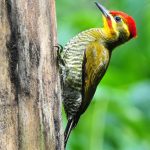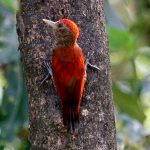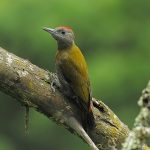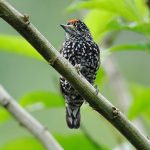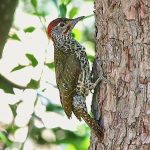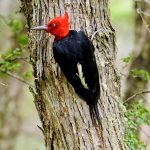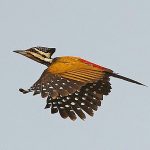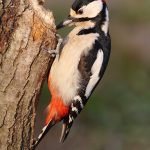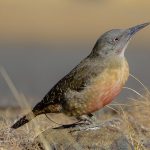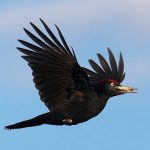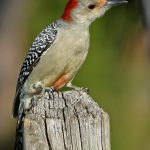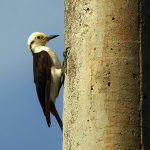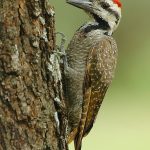Hispaniolan woodpecker
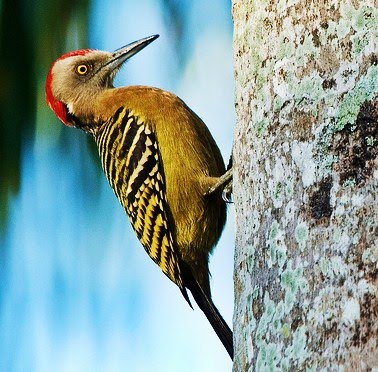
Melanerpes striatus
 |
| Photo by Alef Castellanos (Flickr) |
Common name:
Hispaniolan woodpecker (en); pica-pau-de-Hispaniola (pt); pic d’Hispaniola (fr); carpintero de Hispaniola (es); Haitispecht (de)
Taxonomy:
Order Piciformes
Family Picidae
Range:
This species is endemic to the island of Hispaniola, in the Caribbean, being found in both Haiti and the Dominican Republic.
Size:
The Hispaniolan woodpecker is 20-25 cm long. Males tend to be larger in this species, weighing 83-92 g while females weigh 65-75 g.
Habitat:
These birds a found in virtually any wooded habitat within Hispaniola, from sea level up to an altitude of 2.400 m. They can be found in both wet and dry forests, in pines and hardwoods, in thorny scrub, coffee plantations, palm trees, cacti and mangroves. This species achieves its highest densities in woodlands interspersed with agricultural land, especially where crops are associated with scattered palm trees.
Diet:
Hispaniolan woodpeckers mostly eat insects and other arthropods, including beatles, butterflies, ants, scorpions and spiders. They also eat small Anolis lizards, fruits and seeds. They typically forage alone or in pairs, searching for food in the trees, 7-20 m above the ground.
Breeding:
These birds breed in February-July. They nest in loose colonies of 5-20 pairs, with both members of each pair digging holes in dead palm trees or in the trunks of live trees, cacti or even telephone poles. They are also known to nest in hollow cliffs. The female lays 4-6 eggs which are incubated for 13-14 days. The chicks are fed by both parents but the fledging period was not yet recorded.
Conservation:
IUCN status – LC (Least Concern)
Although the global population size is yet to be quantified this species is described as common over its restricted breeding range. This species may be the target of persecution by farmers and plantation workers due to the damage they can cause to cocoa plantations. Although the population is currently stable, habitat loss and fragmentation, increased urbanisation and direct persecution could cause population declines if adequate legislation is not put into place within its restricted range on Hispaniola.

